Craft
Comic Art, Scholarly Attention:
Susan Kirtley on Lynda Barry: Girlhood
Through the Looking Glass
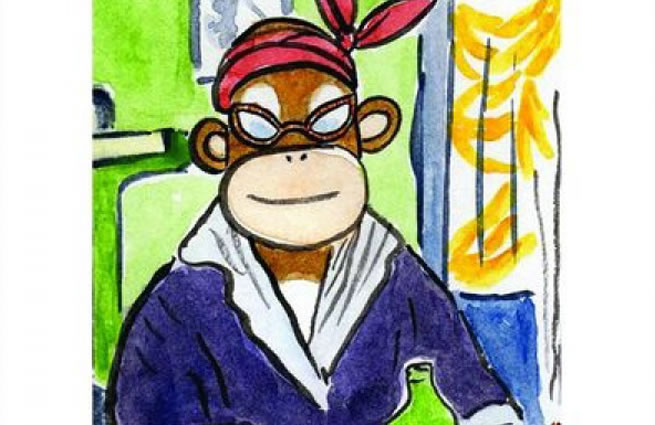
 usan Kirtley is a professor of rhetoric and composition at Portland State University whose writing on composition instruction has been published in a number of scholarly journals. Earlier this year, however, she published a book on one of her other loves: comic art—in this case, specifically the work of Lynda Barry. Propeller spoke to her about what it took for her to learn how to analyze comic art, the positives and negatives of approaching comic art from a scholarly perspective, and her particular admiration for Barry's work.
usan Kirtley is a professor of rhetoric and composition at Portland State University whose writing on composition instruction has been published in a number of scholarly journals. Earlier this year, however, she published a book on one of her other loves: comic art—in this case, specifically the work of Lynda Barry. Propeller spoke to her about what it took for her to learn how to analyze comic art, the positives and negatives of approaching comic art from a scholarly perspective, and her particular admiration for Barry's work.
PROPELLER: I suppose the obvious first question to ask is: When did you first become familiar with Lynda Barry's work? And then maybe as an extension of that question, how did you move from being familiar with her work to deciding to dive in and write a book about it?
SUSAN KIRTLEY: I actually came late to the Lynda Barry love. Although I was vaguely aware of her work from the alternative weeklies, I didn't really read her until graduate school, when a friend gave me a copy of One Hundred Demons. I liked the book so much that I taught it in a memoir class, and subsequently, I did a presentation about using One Hundred Demons in the classroom. At the presentation I met the Great Comics Artists Series Editor, Tom Inge, and he encouraged me to send a proposal for a book about Barry to the University Press of Mississippi. I did, and after getting a book contract I really had to read Barry—really read her. I've always loved reading comics, but scholarship in comic art was new to me, so there was a steep learning curve. Over time I have come to appreciate Barry's skills in many genres, but I became a fan gradually, which is probably a good thing as a scholar.
PROPELLER: Your discussion of Barry's work covers a lot of interesting and entertaining territory, but the discussion also positions itself as an academic book. Were there limitations you felt while writing that were the result of needing the book to qualify as "scholarship"? And on the other hand, are there potentials or certain approaches you can take when writing an academic book that you might not be able to indulge in a more "mainstream" book?
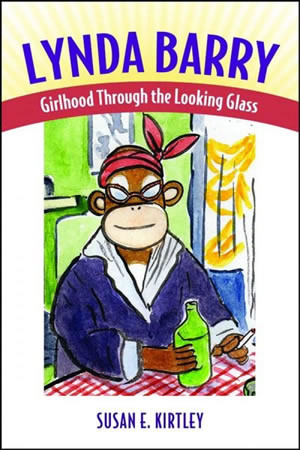 SUSAN KIRTLEY: Inmedieval times, there was this idea of writing with sapientia, "the truth or knowledge of the heart" or scientia, "the truth or knowledge of the head" (to offer a very reductive translation), and I think that at times in academic writing we get stuck in the head too much, not acknowledging the emotions, the personalities, and all of the messy and interesting stuff. When writing an academic book I left out a great deal of the personal information I learned about Barry, as well as my own personality and even the personalities of the people who love her. When addressing a cult figure like Barry who argues that we should connect and create and celebrate, it was sometimes awkward to write a book that is rather removed and detached.
SUSAN KIRTLEY: Inmedieval times, there was this idea of writing with sapientia, "the truth or knowledge of the heart" or scientia, "the truth or knowledge of the head" (to offer a very reductive translation), and I think that at times in academic writing we get stuck in the head too much, not acknowledging the emotions, the personalities, and all of the messy and interesting stuff. When writing an academic book I left out a great deal of the personal information I learned about Barry, as well as my own personality and even the personalities of the people who love her. When addressing a cult figure like Barry who argues that we should connect and create and celebrate, it was sometimes awkward to write a book that is rather removed and detached.
Alternately, I feel that comic art deserves scholarly attention and should be debated and discussed in academic communities, and therefore these sorts of scholarly books help legitimize comics as worthy of extended inquiry within the academy. I am hopeful that this book will serve as a starting point for additional research into Barry's oeuvre, and I hope it adds to the growing field of comics scholarship.
PROPELLER: You said that scholarship on comics was new to you and that there was a steep learning curve. What kind of things were on that learning curve? What did you have to understand or orient yourself to in order to approach comics from that perspective?
SUSAN KIRTLEY: Although I did work in television for a bit, I was trained primarily as a literary critic and theorist in rhetoric and composition, and analyzing comic art was much more complicated than I initially realized. While I've been reading comics since childhood, I never understood the complexity of the medium, which does indeed have a grammar and syntax all its own. For my project I had to study the emerging field of Comic Art scholarship, as well as Art History, American Studies, Feminist Theory, Film Theory, Narrative Theory, and so on. When you look at even a deceptively simple four-panel comic strip, one must consider the panels, the gutter, the narrative text, the text balloons, the font, the drawing style, the characters, the point of view, the narrator...the list goes on and on. For a medium that is often dismissed as disposable and juvenile, comic art presents great intellectual challenges for scholars, and as someone drawn to a challenge, I like that.
PROPELLER: It's not unusual to hear writers or artists dismiss academic studies of their work—or simply claim not to be interested in them—but on the acknowledgments page of your book, you thank Barry and quote her as having told you, "I personally love throbbing forehead people." Do you have a sense as to why she welcomed this kind of exploration of her work? Have you found others in the comic community who are similarly open to academic readings of what they do?
SUSAN KIRTLEY: I attended the Festival of Cartoon Art in Ohio a few years ago, and it was an amazing opportunity to meet with academics and comic artists. The first day of the festival consisted of presentations by academics, while the audience was largely comprised of actual comic artists. It was incredibly intimidating to be presenting a paper on "Focalization in Ernie Pook's Comeek" to the artists, but they were very generous. They teased and cajoled the academics, certainly, particularly for our jargon and obfuscation, but several later approached me and said that they appreciated our work, although they hadn't realized they were creating such complex works at the time. With that said, I can understand a comic artist being concerned about an academic analysis of one's work; comic art has been dismissed as a lesser form for many years and it is reasonable to fear a flippant or contemptuous appraisal. Lynda Barry isn't widely studied, but she had worked with a few academics over the years, so that helped pave the way for me, and I was very careful to be respectful of her time and resources.
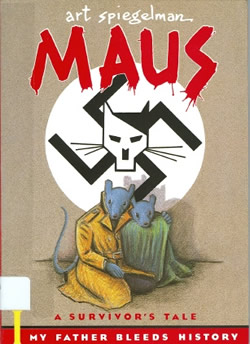 PROPELLER: The move that comics have made from a supposedly fringe or lesser form to a genre that people are unashamed to admire has certainly been discussed quite a bit in the last few years—a local example (for us, since we live in Portland) might be that the Oregon Book Awards added a category for "Graphic Literature" last year. You quote book reviews of Barry's work from the late 1980s, though, in which reviewers were already wrestling with how to respond to work they knew was serious and of high quality, but which was created in a genre they weren't used to admiring. Is Lynda Barry the artist who broke the "comics aren't serious" barrier? Or in your research, do you feel there were other books or artists that particularly ended up forcing mainstream book reviewers to reassess the place they gave to comics?
PROPELLER: The move that comics have made from a supposedly fringe or lesser form to a genre that people are unashamed to admire has certainly been discussed quite a bit in the last few years—a local example (for us, since we live in Portland) might be that the Oregon Book Awards added a category for "Graphic Literature" last year. You quote book reviews of Barry's work from the late 1980s, though, in which reviewers were already wrestling with how to respond to work they knew was serious and of high quality, but which was created in a genre they weren't used to admiring. Is Lynda Barry the artist who broke the "comics aren't serious" barrier? Or in your research, do you feel there were other books or artists that particularly ended up forcing mainstream book reviewers to reassess the place they gave to comics?
SUSAN KIRTLEY: While artists had been creating comics in various genres for many years, I think the watershed moment in terms of mainstream acceptance was Art Spiegelman's Maus. When it won a Pulitzer in 1992, I think that signaled a shift in thinking. Again, that isn't to say that people weren't doing great, serious work in the form of comic art before, but Maus went a long way toward legitimizing comic art in the mainstream as well as in academic circles.
PROPELLER: Your book is subtitled "Girlhood through the Looking Glass," and I think many readers will be familiar with Barry's "Ernie Pook's Comeek," since it has been widely syndicated, especially in a lot of alt weekly newspapers, for at least a couple decades now. You point out in the book, however, that Barry's interest in childhood and child narrators was evident not only from the very beginning, but even in her other projects. Which of these "Early Barry" projects or moments do you find most interesting, and why?
SUSAN KIRTLEY: These days Lynda Barry is associated with a certain drawing style as well as her characters (Marlys, Maybonne, and Arna), and she is often criticized for what is perceived as a lack of drawing ability or a "juvenile" aesthetic. Some of her earliest works, such as the 2 Sisters Comics also address childhood, but showcase a very different drawing style, and I find the evolution of her style very interesting.
I think the comic "I remember" is particularly interesting because it is an adult reflecting on childhood, a stance the real Lynda Barry came to take more and more as time went on. The comic invites the reader to fill in the final panel with his or her own reflections, a participatory position Barry also promotes throughout her career.
PROPELLER: Could you say a bit more about what you mean by "participatory position"—just because that can mean so many things, and in comics, readers' participation will be slightly different than in a text-only piece, right? In other words, what kind of participation is Barry asking of her audience?
SUSAN KIRTLEY: As I took on the project of investigating Barry's career over time and across genres I noticed this theme of audience interaction and participation, which I found particularly intriguing. In her comics, Barry often breaks the fourth wall, asking the reader to join in, as she does in the comic "How to Draw Cartoons:"
http://www.flickr.com/photos/deathtogutenberg/1677485742/
Within her comic strips, Barry also presents varying and sometimes contrasting points of view. At times the textual narration contrasts with the action depicted and the reader is given the job of deciding the "truth" of the strip. Should we believe the textually-based narrator? The images? At other times, Barry leaves a gap in the imagery, and the reader must create "closure," to borrow a technical term from Scott McCloud, filling in the gaps, the unwritten and not pictured. Barry makes her readers work, and I respect her more for it. Her latest books, What It Is and Picture This, definitely expand on this philosophy, acting as "Do It Yourself" creative writing and drawing manuals that directly engage the audience in creative exercises.
PROPELLER: I also want to ask about something you just mentioned that strikes me as very important about her work—and you mention this in the book, as well—which is that Barry changes her drawing style in different projects. I think people that know her work casually could easily think she's not very good at drawing, but she does the best she can as a kind of text-decoration. But the drawing style she uses is artifice—there's actually a huge amount of skill and care that goes into the drawings, but then they're often in frames where the text is given a dominant portion of the space. How would you describe the effect of this kind of strategy? It strikes me as fascinating, in that many comic artists present overt visual skill as a way of gaining authority, but Barry's doing something very different.
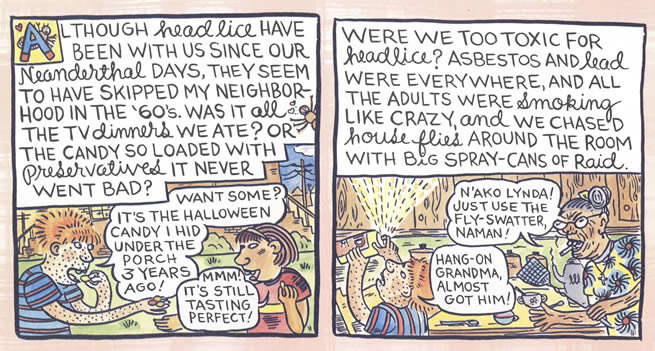
SUSAN KIRTLEY: Barry stands out to me as an unusual comic artist, relying so heavily on words, and (particularly in Ernie Pook's Comeek) presenting the images as simple, raw illustrations. In an interview Barry expressed her frustration that people think she can't draw, and when I really studied her career I could understand why. She's done some amazing painting and collage work that proves her comic art style is intentional. I think that the drawing style of Ernie Pook certainly underscores her themes in presenting this world of children. She shows us the flaws and disappointments of childhood, and as the textual narration is from various children's points of view, so, too, does the artistic representation reflect the perspective of children. Her artistic rendering is absolutely intentional.
I also found Barry's self-representation in One Hundred Demons fascinating. She draws herself at varying ages, but none of the images is flattering. Charles Hatfield calls this "ironic authentication"—the graphic memoirist gaining authority by presenting oneself as unattractive in appearance and demeanor. As a reader, I connect with these imperfect images, and as a scholar of literature I value Barry's writing skills, particularly since the strength of the written narrative is often much weaker than the imagery in comic art.
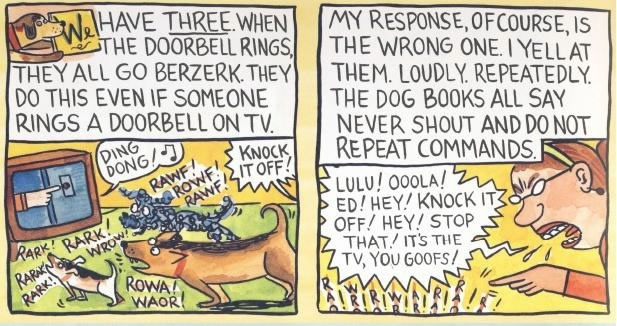
PROPELLER: You've mentioned some academic analysis skills necessary for writing insightfully about Barry's work. Did such a long and intense amount of attention to her work change you as a person, though? It seems like devoting the energy necessary to produce a book usually requires some kind of personal connection or investment on the part of the writer.
SUSAN KIRTLEY: It took me several years to write the book, and the process definitely challenged me as an academic. I learned a great deal about scholarship in other disciplines, and I still have so much more to investigate. The process of working with the editor and readers encouraged me to compromise and work collaboratively. On a personal level, I think that studying Barry so intensely also confirmed some of my own core beliefs, philosophies that I share with Barry, even though I didn't realize that at the outset of the project and even though we come at these ideas in very different ways. When I started studying Barry I did so out of a fairly academic interest in visual rhetoric and the pairing of text and image to produce a compelling narrative. Yet as I studied her entire oeuvre I realized that we share a belief in the benefits of the creative process, regardless of one's aptitude or skills. I think there is value for everyone in drawing and writing, even though many of us will never be professionals. Furthermore, I think we both feel strongly about crossing disciplines and breaking boundaries between high and low culture. I have been questioned many times by other academics for my interest in popular culture, and I know Barry has been criticized for creating comics rather than fine art, and while I would in no way equate my work with Barry's, I think we share a stubbornness for standing by our convictions. And I think we both love oddballs and root for the underdog. In writing this book I have come to find so much to admire in Barry's work, and it has also strengthened my enthusiasm and commitment to studying comic art. I still have a long way to go, but I think I'm a stronger scholar at the end of the project. It is also possible that by publishing a book about comics I have solidified (and publicized) my status as a complete nerd, but so be it.
 Susan Kirtley lives in Portland, Oregon.
Susan Kirtley lives in Portland, Oregon.


